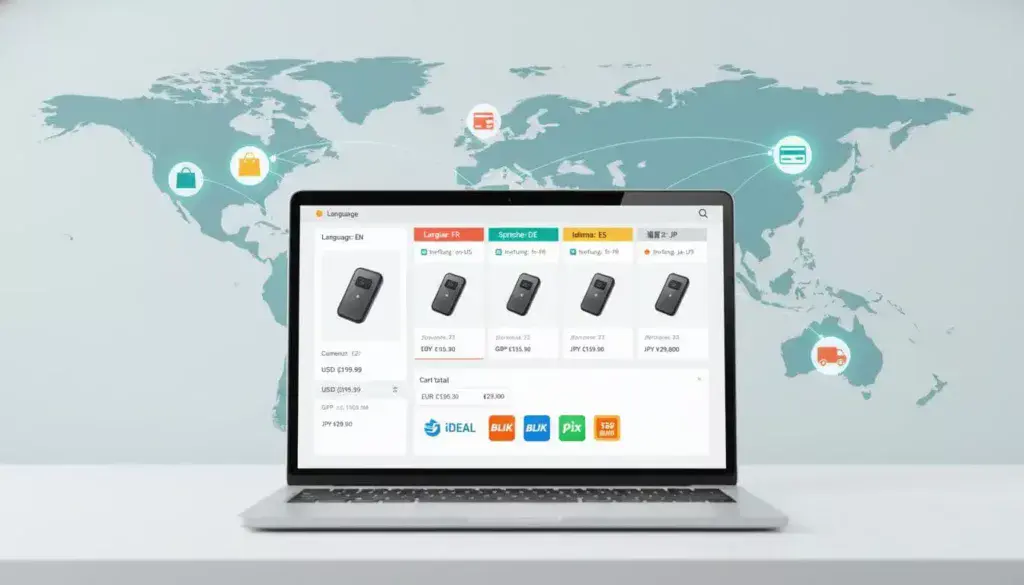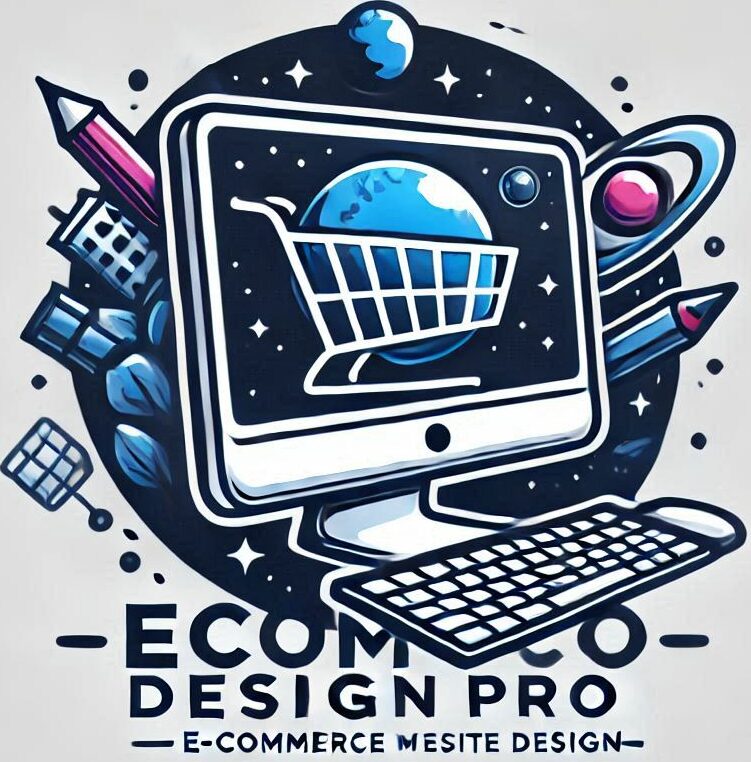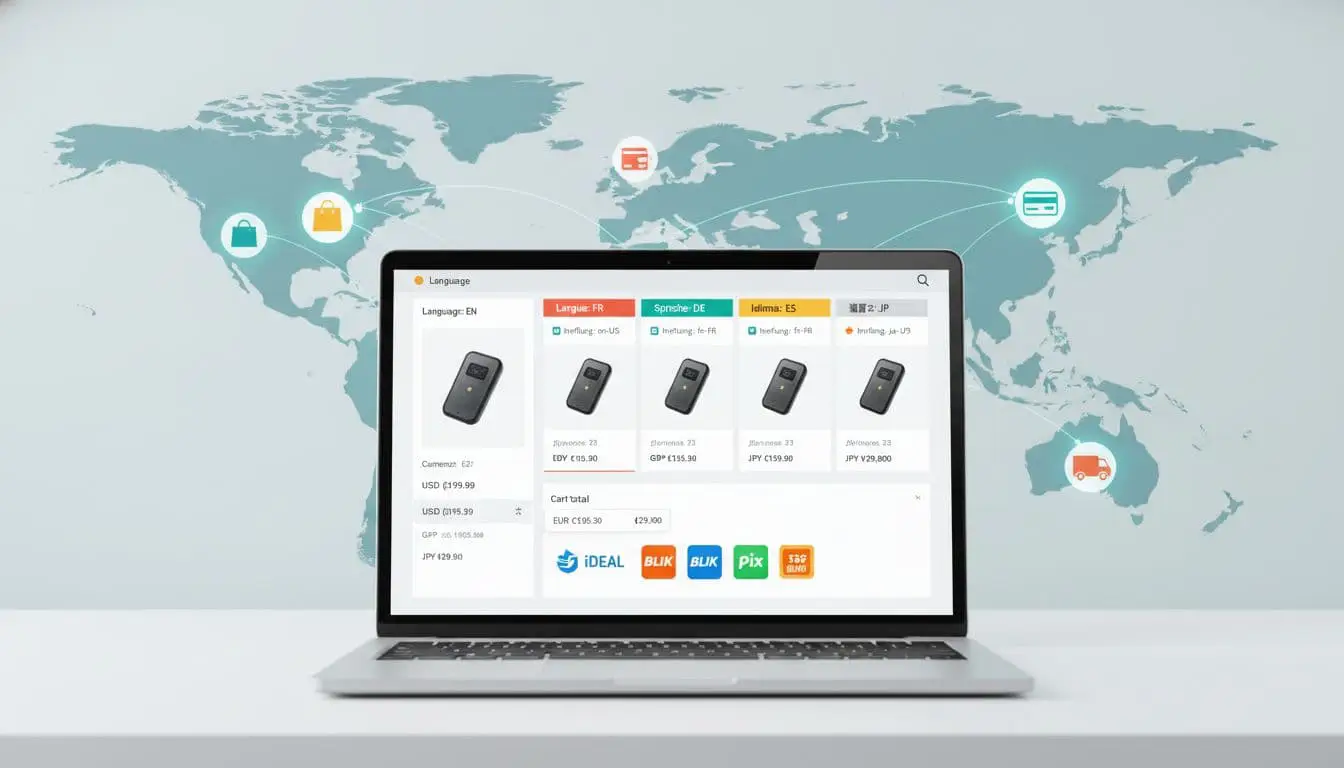
Shoppers are spending across borders at record levels. In 2025, global e-commerce is expected to hit $6.4 to $7.4 trillion, with about 24% of retail happening online and nearly 3 billion people buying on the web. That is a huge chance to reach new customers who already want what you sell, especially through effective e-commerce website translation.
There is a key difference between translation and localization. Translation turns words from one language into another. Localization adapts your store for local buyers, including currency, sizes, dates, taxes, shipping, search terms, checkout, and trust signals. E-commerce localization takes this further by ensuring your entire online presence resonates culturally and functionally. Get this right, and your site feels local, not foreign. This guide emphasizes e-commerce localization to make your expansion seamless.
This guide walks you through a clear, step-by-step plan focused on e-commerce localization. You will pick target markets with real demand, choose the pages that move revenue, and set up a translation workflow that blends AI speed with human review. You will build a glossary and style guide, map local keywords, and update UX details like currency, address formats, payment methods, and delivery options. You will handle legal pages and returns, run QA on mobile, and track results with analytics to boost your conversion rate.
We will also help you dodge common traps. That includes word-for-word product copy, mixed currencies at checkout that harm the checkout experience, slow pages from heavy fonts, missing local payment options, and shipping or tax surprises. Follow the steps, skip the noise, and launch a website that improves the overall customer experience and feels native on day one.
Ready to sell abroad with confidence? Let’s get your website ready for the clicks, carts, and conversions waiting in new markets.
Step 1: Research and Pick Your Target Markets Wisely
 Photo by RDNE Stock project
Photo by RDNE Stock project
For successful international expansion, start where you have the best odds in the global market. Conduct thorough market research to look for markets that share language roots, buying habits, and logistics paths with your current customers, including aspects of inventory distribution. For a U.S. store, Canada and the UK are often easier first steps. For a German store, Austria and Switzerland can be efficient wins. Use data to back your picks, not gut feel.
- Use demand data: search volume, CPCs, category sales ranks, and marketplace reviews as part of your market research.
- Size up competition: price positioning, shipping speed, and return policies.
- Check unit economics: landed cost, duties, VAT, and local delivery rates.
Understand Cultural Differences in E-commerce Localization to Avoid Mistakes
You are not just changing words; you are adapting the experience through e-commerce localization. Adjust visuals, product names, and promos to match local taste, creating localized content that builds on cultural differences. Colors, models, humor, and holiday timing all influence brand trust and conversion rate. Cultural differences still tank campaigns, as seen in well-known marketing blunders that ignored local norms. For examples that still teach, see these cross-cultural marketing blunders.
- Product names: avoid slang or terms with negative meanings.
- Visuals: reflect local diversity, modesty norms, and settings with localized content.
- Pricing cues: use familiar discount styles, like round numbers or bundle deals, tailored through localization.
- Holidays: plan for Singles’ Day in China, Ramadan campaigns in Muslim-majority markets, and Golden Week in Japan.
Quick cultural research checklist, integrated with market research:
- Map top holidays and payday cycles.
- Review color and image preferences.
- Validate sizing charts and units.
- Localize product reviews and FAQs.
- Test two promo styles before rollout.
Common errors that hurt sales, often stemming from overlooking cultural differences:
- Insensitive imagery, jokes, or gestures that affect the customer experience.
- US-centric charts or inches-only sizing.
- Promotions that clash with local holidays or payday timing, impacting the customer experience.
Check Legal and Technical Requirements First
Compliance builds brand trust and protects revenue through proper e-commerce localization. In 2025, data rules keep tightening in Europe and Asia. Expect ongoing scrutiny on data transfers and localization, as tracked in these 2025 data privacy trends. India’s Digital Personal Data Protection Act is rolling out with draft rules in 2025, which affects consent, data storage, and cross-border transfers; get briefed here: Global Businesses Should Brace Themselves for India’s Law.
Key setup checks for localization:
- Data privacy: consent flows, cookie banners, data storage, and deletion rights.
- Payments: offer local favorites like iDEAL, Bancontact, BLIK, Pix, GCash, or Konbini through supported payment methods; this reduces cart drop-offs.
- Formats: currency, decimal separators, dates, and addresses that match local standards, including local currency symbols.
- Taxes and duties: comply with tax regulations for VAT, GST, and DDP options shown at checkout.
- Shipping: display delivery windows, pickup points, and return addresses in-country.
Pro tip: start with similar markets to cut risk and time to market during e-commerce localization. You will learn fast, build repeatable playbooks, and scale into harder regions with fewer mistakes.
Step 2: Choose Smart Ways to Translate Your Site Content
Speed matters, but quality sells. Use machine translation for scale, then add native human review to make your store feel local. Focus on the pages that move revenue first, like product pages, menus, search filters, emails, and paid ads. Translation changes words. Localization adapts your store to how people shop, including tone, sizes, checkout cues, and SEO. For accuracy and trust, involve native speakers in e-commerce localization.
Blend AI Tools with Human Touch for Best Results
AI can handle automated translation for thousands of SKUs in minutes. It is great for product descriptions, category pages, and FAQs. In 2025, teams often combine tools like DeepL, Google Cloud Translation, Microsoft Translator, Amazon Translate, and TMS platforms such as Phrase, Smartling, Lokalise, or Crowdin. For a quick overview of current options, check this roundup of AI translation tools.
Machine-only translation misses context, style, and cultural cues. Use MTPE, short for machine translation with post-editing, to tighten quality in your localized content. This approach ensures better customer experience by avoiding awkward phrasing that could hurt conversion rates.
Simple MTPE workflow for e-commerce localization:
- Run bulk content through automated translation with your glossary and tone rules.
- A native linguist edits for accuracy, brand voice, and clarity in the translation.
- Multilingual SEO pass adjusts keywords, slugs, and meta tags.
- UX pass checks menus, filters, size charts, and help text.
- Final in-market review on mobile for screenshots and microcopy.
What to translate first in e-commerce localization:
- Product titles, short bullets, and detailed product descriptions.
- Hero copy, promo banners, and cart messages.
- Navigation, filters, and footer links.
- Email templates and ad headlines.
Pros: speed, lower cost per word, consistent terms with translation memory. Cons: risk of awkward phrasing, errors in technical specs, and missed cultural fit that impacts localization efforts.
Hire Localization Experts for Seamless Adaptation
Work with partners who know e-commerce localization, not just general translation. They help you avoid cultural blunders, speed up launches, and keep SEO intact while enhancing the customer experience. See what to look for in this guide on choosing a website localization service. Localization experts play a critical role in adapting content beyond simple word replacement, which directly boosts conversion rates through tailored e-commerce localization.
Questions to ask:
- Do you have retail or marketplace case studies in my target country for localization?
- How do you handle product variants, attributes, size charts, and product descriptions?
- Can you manage multilingual SEO and structured data in e-commerce localization?
- Which QA steps cover checkout, returns, and payment copy?
- What are your SLAs for updates during promos and peak season?
Cost-saving tips for localization:
- Use MTPE for long-tail SKUs and product descriptions, human-only for high-visibility pages.
- Build a glossary and style guide to cut edits in your localized content.
- Reuse translation memory across similar products.
- Prioritize top 20% pages by traffic and revenue.
- Pilot one country, then scale the same workflow to others.
Step 3: Optimize and Launch for Local Shoppers
You translated the site. Now tune it for everyday shoppers in each market through effective e-commerce localization. Focus on how they find you, how they pay, how they receive orders, and how they get help. Small tweaks here lift conversion rate and SEO performance fast, ensuring smooth e-commerce localization as the final optimization stage before launch.
Boost Visibility with Multilingual SEO Strategies
Search engines rank pages that look native to users in the global market. Set clear signals and speed up mobile as part of your multilingual SEO approach.
- Use language-specific URLs with a solid domain structure: country folders like
/fr/,/de/, or country-plus-language like/ca-fr/. Keep slugs short and match local search terms. This domain structure helps in e-commerce localization by signaling relevance to local search engines. - Add accurate hreflang tags for every variant, plus a self-reference. Pair with a single canonical per language to avoid duplicates. Proper hreflang tags are essential for technical localization in the global market.
- Map local search terms, not translations. Search intent shifts by market, so validate volumes and SERP types. For a current overview, see this practical guide on multilingual SEO research and hreflang best practices.
- Localize titles, metas, alt text, and schema through targeted localization efforts. Include
inLanguagein structured data and local units or sizes in product markup to enhance e-commerce localization. - Speed up mobile for global users. Compress images, lazy load below-the-fold sections, preconnect to CDNs, and trim web fonts. Track Core Web Vitals by country to support overall SEO.
- In Search Console, submit separate sitemaps per language. Check indexing and impressions by market weekly after launch.
These steps drive organic clicks without new ad spend, boosting your conversion rate. For a 2025 checklist on hreflang tags, mobile speed, and on-page tactics, review this concise multilingual SEO guide.
Add Local Payments, Shipping, and Support to Build Trust
 Photo by Wojciech Kotlicki
Photo by Wojciech Kotlicki
Trust is earned at checkout and after through thoughtful e-commerce localization. Add the options buyers expect, then test, test, test to improve the checkout experience and reduce cart abandonments.
- Payments: Integrate local payment methods like iDEAL (NL), Bancontact (BE), BLIK (PL), Pix (BR), Konbini (JP), GCash (PH), plus wallets and pay-over-time like Klarna. Show currency and totals with duties to build brand trust. These payment methods tailor the checkout experience for better conversion rate.
- Shipping: Offer DDP pricing, pickup points, weekend delivery, and live delivery windows. Local carriers often convert better than global ones, cutting down on cart abandonments by ensuring reliable shipping options as part of e-commerce localization.
- Support: Provide chat and email in the native language, with local business hours and phone or WhatsApp where common. Publish FAQs and returns in plain local terms to enhance the customer experience.
- UX microcopy: Translate error states, field labels, and address formats through precise localization. Save carts across devices to maintain a seamless customer experience.
Roll out with a soft launch. Invite a small group of local shoppers, run A/B tests on payment methods order and shipping defaults, then scale. Brands in recent case studies show lower drop-offs and higher conversion rate after adding local payment methods and clearer delivery promises, as summarized in these international expansion learnings: case studies on cross-border growth and this 2025-focused guide to cross-border eCommerce success. This localization strengthens brand trust in every market.
Tie promos to local holidays and payday cycles with some personalization. Offer fast-lane shipping ahead of peak days, and watch reviews improve as delivery and support feel truly local, solidifying e-commerce localization as the key to launch success.
Conclusion
You now have a simple plan for localization to go global with confidence. Pick markets with real demand in the global market, translate what drives revenue first, then focus on localization for checkout, payments, delivery, and SEO. Blend machine speed with native review for your translation workflow, and test localization on mobile before you scale your website. Track results by country, tune copy and UX through ongoing localization, and repeat what works for your international expansion.
Localization that treats buyers like locals delivers outsized gains in conversion rate. Nanoleaf lifted European revenue 4x by pairing multiple languages and currencies with human-edited product descriptions as part of their localization strategy. Your store can do the same with a focused MTPE workflow for translation, hreflang done right for SEO, and local payment methods from day one. Effective localization ensures localized content resonates, improving the customer experience on your website.
Ready to move? Start with one country this quarter, pilot your localization workflow, and ship with DDP pricing. Localization builds trust in the global market, so prioritize localized content with human review to maintain quality. If you want a faster start, book a short consult with a localization expert or trial a TMS like Phrase or Smartling to build your glossary, style guide, and translation memory for seamless localization.
Global shoppers are ready. Make your website feel local through thoughtful localization, and the doors open.


